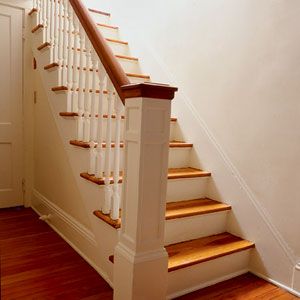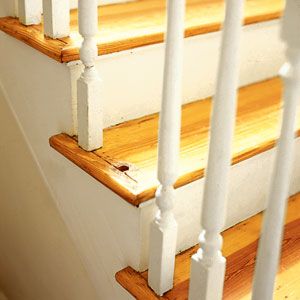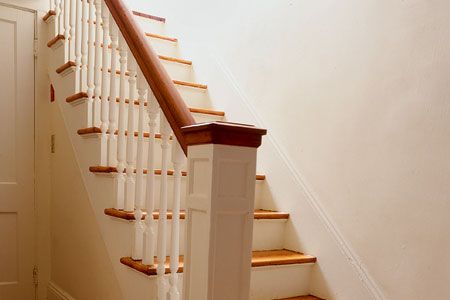
Despite appearances, the pillars between the treads and banister on a staircase are not there for support. Usually spaced about 4 inches apart, balusters protect people — mostly small people — from tumbling off the side of the staircase. A loose or broken baluster won’t jeopardize the whole railing, but fixing it properly is a good idea for the sake of children and pets, not to mention aesthetics.
On a 1-to-10 scale of home-improvement challenges, baluster replacement rates about a 4. The first step is to remove a baluster that’s intact and take it to a woodturner to copy. When it comes to demolition projects, pulling out the broken pieces of a baluster has to rank as one of the fastest and tidiest. A baluster is attached with little more than a mortise and tenon rig at the bottom and a couple of nails at the rail. (Don’t be alarmed if you find as many as five nails — maybe your predecessors were slightly compulsive.) Getting a prototype out in one piece often requires you to remove the return on the end of the tread. To do this, rake a putty knife through the seam between the return and the tread to break any seal, then insert a small cat’s-paw and wiggle the return loose. If the tenon is thicker than the mortise path, carefully chisel a larger hole. A less taxing but potentially more damaging method is to simply whack the upper portion of the spindle with a dead-blow hammer to loosen the nails and then ease out the baluster. David Raymond, a carpenter who is based in Fairfield, Connecticut, suggests using a piece of scrap wood to reach narrowly spaced balusters, resting the wood against the spindle and then striking it with a mallet.
When you send the prototypes off to the turner, have extras made. You may need them later. As This Old House contractor Tom Silva half-jokingly points out, many things besides careening furniture and roughhousing kids can break a baluster: “an ax, a baseball bat, a saw…” When you go over the specifications with the turner, be sure to note the species of wood you want (the harder the better). There are usually two or three balusters per riser, each a different length, so send samples of the appropriate sizes. Also, request that the ends of spindles be left long. Although it makes more work, trimming balusters yourself reduces the chances of ending up with a misfit.

Depending on how long the turner takes to make the replacements, you may have a couple of weekends to clean up the wood around the baluster holes-in-waiting. Scrape off all gunk, old stain, dust and dirt and sand around the tread for a tighter fit. The days apart may also present a good opportunity to refinish the treads. Then again, it’s football season; isn’t it time to catch the halftime show?
When your order arrives, sand and paint the balusters. Now comes the challenging part of the project: cutting the top ends to match the slope of the rail. This is why replacing a baluster rates a 4 instead of a 1. To determine where to cut, measure the length with a metal tape and the angle with a bevel gauge. Often in old houses the balusters are no longer plumb. Resist the temptation to reinstall the new ones plumb; they’ll just make your staircase look like a mouth full of crooked teeth. Settle for making them parallel or evenly spaced, top and bottom. This is one of those cases where, if it looks right, it is right. “It’s not an exact science,” Raymond says. “Ultimately, it’s about what the eye picks up.”
Once you’ve cut the baluster, insert the tenon in the mortise, and then position the top end in the middle of the rail’s underside. If the tenon is too big, rasp it down; if it’s too small, Raymond suggests wrapping a piece of paper around it and gluing it in place. For a superstrong bond, apply carpenter’s glue twice on the top of the baluster before securing it to the banister with two 2-inch nails. Raymond considers hardwood trim nails essential because they’re thinner, harder and coated for split-free installation. Try predrilling the nail holes to prevent the wood, especially hardwood, from splitting. When the baluster is set, nail on the tread return with 21/2-inch hardwood trim nails. Finally, cover the nailheads on the banister with putty and touch-up paint.
Voila: A clean column of balusters guarding the stairs in what the naked eye perceives as perfect symmetry. Ready to fix those squeaky treads?

